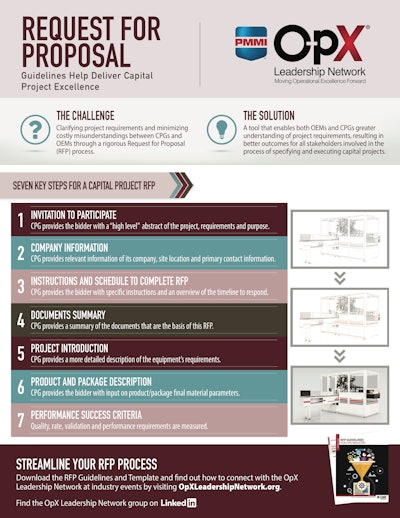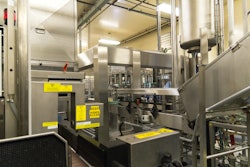Companies who participated in Vision 2025 at PACK EXPO Las Vegas discussed the RFP process and were asked how they are addressing the issues of knowing what’s at stake in the beginning of the process and establishing standards of use. More than half mentioned identifying key stakeholders and milestones as solutions, followed by partnering with OEMs. It was the consensus that clearly communicating needs, capabilities and expectations between CPGs and OEMs was the epicenter of the RFP process.
This year at PACK EXPO Las Vegas, 127 participants gathered from CPGs and other organizations such as PMMI and the Contract Packaging Association, to discuss key manufacturing challenges with a broad array of stakeholders – from C-suite to mid-level management with various areas of functionality such as operations, engineering, etc.
Here are a few of the specific challenges and solutions mentioned during Vision 2025:
CHALLENGES:
• Most participants note that it’s clarity and communication between CPGs and OEMs throughout a project – not just parts of a project – that the RFP process lacks.
• Exacerbating the situation, most participants note that there is often no common, clearly defined process or systematic approach guiding the RFP process that CPGs and OEMs agree on – processes frequently vary from company to company.
• Most participants point out that even when there is agreement on an RFP process, there are challenges “sticking to the script” throughout the process – a lack of consistency, discipline, commitment and follow-through.
• Many participants note that there is often a disconnect between CPGs and OEMs on which standards to follow in a capital project, e.g., 3-A, ANSI, etc.
SOLUTIONS:
• Many participants report that they are scheduling more face-to-face conversations both internally and externally to review specifications and drill down on details of the RFP – greater emphasis on specifics, not generalities.
• Many participants point out that they are getting more input from the plant floor – those literally on the ground floor of the project – in developing an RFP.
• Many participants report that they are having more detailed discussion – internally and externally – regarding the true OEE of a capital project, especially what results can be truly delivered.
Participants were quick to point out that it’s not just the communication and collaboration between CPGs and OEMs that’s important, but the need to break down internal silos and get stakeholders involved in the RFP process. Some participants have developed a sales, engineering and project management department to ensure greater collaboration and input.
CHALLENGES:
• Most CPGs note that there is oftentimes a disconnect between internal functions – sales, engineering, quality, operations, etc. – when it comes to developing effective RFPs.
• One of the challenges CPGs face when they do get stakeholders engaged in the RFP process is managing their expectations, especially balancing wants versus the needs.
• One particular challenge they note is the difficulty keeping all stakeholders engaged in the RFP process throughout the project, especially the final mile.
SOLUTIONS:
• Most participants note that they are spending more time with each other – CPGs and OEMs – drilling down on purchases and expected outcomes – scenario planning, not waiting to see how things turn out.
• Most report having more detailed discussions regarding an obsolescence schedule or technology life cycle, especially for automation and controls.
• Both CPGs and OEMs report that they are paying more attention to the upfront budget of a capital project and more diligently managing the budget throughout the entire capital project.
Source: PMMI Business Intelligence “Vision 2025 PACK EXPO Las Vegas”
Download the FREE report below, or here.
Make plans to visit PACK EXPO East in Philadelphia, March 3-5, to see on-trend food processing and packaging machinery and materials.



























